#Danish literary translation
Explore tagged Tumblr posts
Text
Danish Translation Services and Danish Language Services
Danish Translation Services Effective communication is crucial. Danish translation services bridge language gaps, making interaction smoother. They facilitate business dealings between Danish and international companies. This is essential for trade, collaboration, and economic growth. They also support academic exchanges by translating research papers and educational materials. This fosters…

View On WordPress
#Danish business translation#Danish closed captioning#Danish document translation#Danish dubbing services#Danish interpretation services#Danish language translation#Danish legal translation#Danish literary translation#Danish live captioning#Danish localization services.#Danish medical translation#Danish multilingual transcription#Danish subtitling#Danish technical translation#Danish to English translation#Danish transcription services#Danish translation services#Danish voice-over services#English to Danish translation#professional Danish translators
0 notes
Text
List of interesting ressources pertaining to norse paganism, scandinavian folklore and history, and nordic religions in general
These are sources I have personally used in the context of my research, and which I've enjoyed and found useful. Please don’t mind if I missed this or that ressource, as for this post, I focused solely on my own preferences when it comes to research. I may add on to this list via reblog if other interesting sources come to my mind after this has been posted. Good luck on your research! And as always, my question box is open if you have any questions pertaining to my experiences and thoughts on paganism.
Mythology
The Viking Spirit: An Introduction to Norse Mythology and Religion
Dictionnary of Northern Mythology
The Prose and Poetic Eddas (online)
Grottasöngr: The Song of Grotti (online)
The Poetic Edda: Stories of the Norse Gods and Heroes
The Wanderer's Hávamál
The Song of Beowulf
Rauðúlfs Þáttr
The Penguin Book of Norse Myths: Gods of the Vikings (Kevin Crossley-Holland's are my favorite retellings)
Myths of the Norsemen From the Eddas and the Sagas (online) A source that's as old as the world, but still very complete and an interesting read.
The Elder Eddas of Saemung Sigfusson
Pocket Hávamál
Myths of the Pagan North: Gods of the Norsemen
Lore of the Vanir: A Brief Overview of the Vanir Gods
Anglo-Saxon and Norse Poems
Gods of the Ancient Northmen
Gods of the Ancient Northmen (online)
Two Icelandic Stories: Hreiðars Þáttr and Orms Þáttr
Two Icelandic Stories: Hreiðars Þáttr and Orms Þáttr (online)
Sagas
Two Sagas of Mythical Heroes: Hervor and Heidrek & Hrólf Kraki and His Champions (compiling the Hervarar saga ok Heiðreks and the Hrólfs saga kraka)
Icelandic Saga Database (website)
The Saga of the Jómsvíkings
The Heimskringla or the Chronicle of the Kings of Norway (online)
Stories and Ballads of the Far Past: Icelandic and Faroese
Heimskringla: History of the Kings of Norway
The Saga of the Volsungs: With the Saga of Ragnar Lothbrok
The Saga of the Volsungs (online) Interesting analysis, but this is another pretty old source.
The Story of the Volsungs (online) Morris and Magnusson translation
The Vinland Sagas
Hákon the Good's Saga (online)
History of religious practices
The Viking Way: Magic and Mind in Late Iron Age Scandinavia
Nordic Religions in the Viking Age
Agricola and Germania Tacitus' account of religion in nordic countries
Myths and Symbols in Pagan Europe: Early Scandinavian and Celtic Religions
Tacitus on Germany (online)
Scandinavia and the Viking Age
Viking Age Iceland
Landnámabók: Book of the Settlement of Iceland (online)
The Age of the Vikings
Gesta Danorum: The Danish History (Books I-IX)
The Sea Wolves: a History of the Vikings
The Viking World
Guta Lag: The Law of the Gotlanders (online)
The Pre-Christian Religions of the North This is a four-volume series I haven't read yet, but that I wish to acquire soon! It's the next research read I have planned.
Old Norse Folklore: Tradition, Innovation, and Performance in Medieval Scandinavia
Children of Ash and Elm: A History of the Vikings
The Penguin Historical Atlas of the Vikings by John Haywood
Landnámabók: Viking Settlers and Their Customs in Iceland
Nordic Tales: Folktales from Norway, Sweden, Finland, Iceland and Denmark For a little literary break from all the serious research! The stories are told in a way that can sometimes get repetitive, but it makes it easier to notice recurring patterns and themes within Scandinavian oral tradition.
Old Norse-Icelandic Literature: A Short Introduction
Saga Form, Oral Prehistory, and the Icelandic Social Context
An Early Meal: A Viking Age Cookbook and Culinary Oddyssey
Runes & Old Norse language
Uppland region runestones and their translations
Viking Language 1: Learn Old Norse, Runes, and Icelandic Sagas and Viking Language 2: The Old Norse Reader
Catalogue of the Manks Crosses with Runic Inscriptions
Old Norse - Old Icelandic: Concise Introduction to the Language of the Sagas
A Companion to Old Norse-Icelandic Literature and Culture
Nordic Runes: Understanding, Casting, and Interpreting the Ancient Viking Oracle
YouTube channels
Ocean Keltoi
Arith Härger
Old Halfdan
Jackson Crawford
Wolf the Red
Sigurboði Grétarsson
Grimfrost
(Reminder! The channel "The Wisdom of Odin", aka Jacob Toddson, is a known supporter of pseudo scientific theories and of the AFA, a folkist and white-supremacist organization, and he's been known to hold cult-like, dangerous rituals, as well as to use his UPG as truth and to ask for his followers to provide money for his building some kind of "real life viking hall", as supposedly asked to him by Óðinn himself. A source to avoid. But more on that here.)
Websites
The Troth
Norse Mythology for Smart People
Voluspa.org
Icelandic Saga Database
Skaldic Project
Life in Norway This is more of a tourist's ressources, but I find they publish loads of fascinating articles pertaining to Norway's history and its traditions.
#ressources#masterpost#heathenry#research#sources#norse paganism#norse gods#spirituality#polytheism#deity work#pagan#paganism#deities#norse polytheism#mythology#eddas#sagas
677 notes
·
View notes
Text


Okay so, danish is my native language, and even though I’m in my 30s now and I have read the books in english, I still primarily engage with the danish versions whenever I’m doing a reread or relisten, because they’re the ones I grew up with (and the audiobook narrator of the danish version is 👌🏻👌🏻👌🏻)
It’s small and subtle differences between the versions, but danish feels so much more Romionarry coded, and Ron is a lot more supportive.
The biggest difference is that he acknowledges and sides with Harry in recognising that the treatmeant he recieves from Snape and Seamus isn’t okay.
In the english version, Ron says that “It’s not our fault how Snape and Seamus treats you.”
In the most literary translation I can do of the danish Ron says “We can’t be held at fault/made responsible for the fact tha Snape and Seamus are treating you unfairely”
Ron uses the word “uretfærdigt” which firmly puts him on Harry’s side. In the english, he isn’t actively taking a stand against them, but he is in the danish version.
In the english version, Ron also makes it clear that he’s only sharing Hermione’s thoughts with Harry
“But Hermione says SHE thinks-“
In the danish, he doesn’t add that extra layer. He just says “Hermione says that if would be nice-“ He’s more aligned with Hermione, but he’s also putting himself as a more active participant. He agress with Hermione, he’s an active part of the “us” that is being affected by Harry’s explosive behavior.
#I wish I was better at explaining#but the vibe is just entirely different#maybe I’m delulu#but what do I know#Ron has massive tired husband in the danish version haha
8 notes
·
View notes
Text
me: *makes literally any claim*
me: damn.... what if I'm decorating myself with borrowed feathers*... cringe
*Translator's note: This is the Danish version of the idiom "to adorn oneself in borrowed plumes." The idiom originates in Aesop's fable "The Bird in Borrowed Feathers."
and people say janteloven* is dead lol
*Translator's note: "The Law of Jante" is a cultural reference point to describe certain social attitudes similar to "Tall Poppy Syndrome." Descriptions of Janteloven in English will often emphasise its literary origins and focus on it as an attitude weaponised against successful people, however in a modern context, it is better understood as a form of social propriety which members of the culture feel uncomfortable violating. This social propriety is violated by being immodest or self-aggrandising.
6 notes
·
View notes
Text
twenty questions for fic writers!
tagged by @391780
1. how many works do you have on ao3?
13 (until i pull my head out of my arse and crosspost the rest of my little drabbles)
2. what's your total ao3 word count?
22,705
3. what fandoms do you write for?
i've published some call of duty fics and i'm scribbling away at a passenger (2024) fic
4. top five fics by kudos
the aftermath, sentinel, theft and exhibition, "romance" in the age of technology and fill me, feel me.
5. do you respond to comments?
i try! i'm terrified of my emails so i only notice i have comments if i actively check my ao3 inbox though
6. what is the fic you wrote with the angstiest ending?
hmm, probably creeping normality
7. what's the fic you wrote with the happiest ending?
definitely chasing this bittersweet feeling
8. do you get hate on fics?
nope! which is probably a combination of not being a very prolific writer and the fact that my ao3 is locked down (and has been for a while) so only logged in members can see my fics
9. do you write smut?
yes >:)
10. craziest crossover:
i don't really have any crossovers...?
11. have you ever had a fic stolen?
not to my knowledge and i hope it never happens
12. have you ever had a fic translated?
nope, but it would be very nice if someone ever did!
13. have you ever co-written a fic before?
does it count if i don't really "write" as much as yell ideas at my favourite people and cause them to despair? but as a more serious answer, i've never co-written a fic but i do have a long standing original work that i'm sort of co-writing with my friend jay (jay if you ever see this, i promise i'll come back to it. i love you)
14. all time favorite ship?
it's been a long time since i engaged with anything to do with marvel aside from liking the odd gifset but stevebucky will always be my number one. always.
15. what's a wip you want to finish but doubt you ever will?
look it might take me years, the fandom may have moved on or shrunk down to me and three other people, but i will finish my fucking wips
16. what are your writing strengths?
i've been told i have a way of setting the tone within a few sentences and dragging you all along for a quick literary romp. i'm rather proud of that!
17. what are your writing weaknesses?
i can't describe stuff for shit. and action sequences. god, i struggle with action sequences
18. thoughts on dialogue in another language?
i have 0 confidence in my ability to communicate dialogue in another language. otherwise, fairly indifferent to reading dialogue in another language but that's probably because my other language skills are either so degraded (french, danish) or so juvenile (welsh) that i can't actually point out any "flaws" if i come across them
19. first fandom you wrote in?
cod modern warfare (if we ignore the notebooks i would scribble in for his dark materials)
20. favorite fic you've written?
it's a solid tie between chasing this bittersweet feeling, "romance" in the age of technology and Room 28
no pressure tags for: anyone that wants to share, is currently mildly sleep deprived, or has more than 100 unread emails
3 notes
·
View notes
Text


Tove Ditlevsen’s (Copenhagen, 1917-1976) life story is one of both existential turbulence and unique artistic expression. She achieved initial fame for her poetry while still a teenager, but her success was frequently diminished during her lifetime by a critical establishment as “a working-class, female writer.”
Today, Ditlevsen is being championed as one of Denmark’s most important modern authors of the twentieth-century. Her masterpiece The Copenhagen Trilogy (Translated from the Danish by Tiina Nunnally and Michael Favala Goldman) was released in 2021 in the United States by Farrar, Straus, and Giroux, celebrated with a virtual book launch at New York’s Scandinavia House featuring a conversation between American authors Ben Lerner and Rachel Kushner, and moderated by Danish author and critic Morten Høi Jensen.
https://denmarkinnewyork.medium.com/tove-ditlevsen-a-literary-gem-rediscovered-dc0fa4be3840
#Tove Ditlevsen#Denmark#literature#masterpiece#autobiography#self portrait#history#books#cover#collage
5 notes
·
View notes
Note
Since you have an education with Scandinavian folklore, I'd be curious to hear if you have any book reccomendations on Scandinavian Folklore? It's a topic I adore but I find that sources are a bit of a struggle to dig up.
I can read English, Norwegian, Danish (and tentatively with a lot of struggling and swearing) Swedish, so don't worry too much about the dreaded language barrier too much. :>
Hello hello! Thanks for asking! Pardon the late response as well, I wanted to compile a decent list as best as possible! Apologies in advance that I couldn't find easy links for most of them.
Introductory Books:
Vaesen (2013, originally in Swedish) by Johan Egerkrams (I have an English translation by Susan Beard). A beautifully drawn catalog of common Scandinavian folklore creatures. The downside of this book is the lack of direct source quotations and/or super in-depth folkloric analysis. Still a lovely easy read to familiarize yourself with some creatures!
Scandinavian Mythology: An Annotated Bibliography (1988, English) by John Lindow. Simple guide to Scandinavian mythological terms. If I'm remembering correctly, it focuses more on Norse mythological creatures (such as gods and giants) but also features explainers for folk belief figures.
Scandinavia Folk Belief and Legend (1988, English) by Reimund Kvideland and Henning K Sehmsdorf. A very detailed (and chunky!) book that focuses on folkloric beliefs and "old wives' tales" within Scandinavia. It has a lot of citations and references to folklore catalogs, which can then be used for further reading! Also, nicely organized to focus on generalized motifs.
Grimm's Fairy Tales (original German Title: Kinder- und Hausmärchen) by Jacob and Wilhelm Grimm (1812, German but with widely available translations.) While not exactly specifically Scandinavian Folklore, the Grimm brothers and their folklore collections did great work within the field of Germanic folkloric studies and comparative religious/folklore studies. (And if you're a linguist too, we love love love Jacob Grimm) Anyways, there are a million versions of these tales, some very watered down but if you're looking for a chance to read them here's a link (in English and German). The site is a bit clunky and doesn't have ALL the tales. But a good portion of them are available to read. It's good to familiarize yourself with these in general because of the motif commonalities in folklore studies.
More In-Depth Books:
Old Norse Mythology-Comparative Perspectives (2017, English) with Pernille Hermann, Stephen A. Mitchell, and Jens Peter Schjødt, eds., with Amber J. Rose. 2017. An anthology of scholarly articles focusing on discourse within the field of Scandinavian (Norse) religion and folklore studies. Lots of different authors and scholars, some with incredibly specific article focuses but others with more broad analysis and literature reviews. If you need a link, Harvard University seems to have one and it should work if I link it here.
The Norns in Old Norse Mythology (2013, English) by Karen Bek Pedersen. This book hyper-focuses on the Norns within the larger context of Norse mythology and Scandinavian folklore. I highly recommend this book for people who are confused by the various female supernatural figures and their various names and titles. Though it has a specific focus, it is still helpful for overall studies on dísir, nornir, vættir, etc.
Folklore in Old Norse: Old Norse in Folklore (2013, English) edited by Karen Bek Pedersen and Daniel Sävborg. A relatively short book that focuses on literary and medieval textual criticisms about current scholarly trends within the field. Very helpful for understanding scholarly trends as well as bodies of thought in the field of Scandinavian studies--which is always useful for students and newbie researchers!
Witchcraft and Magic in the Nordic Middle Ages (2011, English) by Stephen Mitchell. This book can be helpful in its discussion about the ambiguities between folklore, religion, magic, and witchcraft within the Scandinavian context. It references a lot of primary sources as well as historical sources commenting on said primary sources. It focuses mainly on the transition between Norse paganism to Christianity in Scandinavia but still, I think this book serves as a helpful introduction to understanding how folkloric practices change throughout time for various reasons.
Additional Miscellany Sources:
Motif-Index of Folk-Literature....(6 vols. revised and expanded from 1952-1958, English) by Stith Thompson. This is the compendium for folklore studies and is one of many folklore motif catalogs. Very helpful for understanding folklore in a broader comparative context. Unfortunately, it's very hard to find copies of the volumes, at least for me, but there is a digital link here.
Old Norse Folklore: Traditional, Innovation, and Performance in Medieval Scandinavia (English, 2023 pending release) (edited?) by Stephen Mitchell. This book isn't out yet so I can't comment too much on its content! But in the field, we are waiting to read it! According to the synopsis, it is an anthological book that will feature essays (mainly theoretical) that focus on the transition of mythological and folkloric material in the medium of orality. Hopefully, this book will serve as a good guide to understanding how to connect orality theory (in broader Scandinavian lit. studies) to folkloric motif studies (in Scandinavian folklore studies).
Some Scholars I Recommend:
Pernille Hermann, PhD. Focuses a lot on memory studies and literacy in Medieval Scandinavia. Writes in English and Danish.
Karen Bek Pedersen, PhD. Focuses on in-depth discussions of fate motifs in Norse sagas and mythological texts. Also frequently focuses on female folkloric figures in Scandinavian religion. I believe she writes English and Danish.
Daniel Sävborg, PhD. Focuses on comparative literature studies and somewhat psychological looks into Norse literature and motifs. Writes in English and in Swedish.
Stephen Mitchell, PhD. Focuses on various genres of Norse/Nordic literature with interests in magic, mythology, and legends. Writes in English, I don't know if any other languages.
Thanks for the ask! Hopefully this is helpful! 🖤
Most of the books are in English, since these are the texts my classes focused on specifically and my program is taught in English. It might take me a bit longer to find (throughout my laptop files) the non-English ones we read! As always, research carefully! There are a lot of people with no academic background writing in this subject and getting popularized. And there is also a danger of people using this subject to promote false and dangerous ideologies. (ahem Nordal).
#folklorist#norse studies#norse folklore#scandinavian mythology#scandinavian folklore#folklore studies#comparative folklore#mythology#dark academia#academia#book list
15 notes
·
View notes
Text
Duna Ghali on Writing, Translating, and Publishing Between Arabic and Danish
Last week, we shared an excerpt from Iraqi author Duna Ghali’s acclaimed novel Orbits of Lonelinessin maia tabet’s translation. This week, Duna talks with us about the differing receptions of work by men and women, in Danish and in Arabic, how literary translation feeds her writing, and how sometimes nowhere is the right place to write. In your thoughtful and sometimes very funny essay, “On…

View On WordPress
2 notes
·
View notes
Text
Copenhagen Travels - Part II
When you wake up you hear the tinny spidery voices of the girls again
Down the hotel corridor. You like the noises, though they make you lonely;
You’ll never translate what they just said, and yet, the sounds of the tongues
Are brilliant. Up, you get, hot and dehydrated. The bottled water doesn’t taste
Like water as you slug it down. … What shall we do today? Let’s head up to
The military fort, surrounded by water: sounds wacky, intriguing.
When you get outside the air is white and brittle and the flags alongside the
Canal side vibrate in the breeze. … You turn west, taking a new road, turning
Grimy, and loud, with native men in their vehicles and fluorescent workclothes,
Repairing the roads with their tools, yammering back and forth in Danish and
Smoking cigarettes, drinking steamy foam cups of coffee. Ordinary men, non-tourists,
Starting their day jobs. … At the end of the street is some gargantuan building
Resembling something like a mammoth white tent, with a jumbo logo MAERSK
On the tall side. As you venture you hear an apocalyptic boom booming of some
Kind of machinery that actually scares you even though you’re on civilian land.
As you pass the innocent stalls with their magnets and glitter globes; and dotted
By these are the seafood cafes, wherein, through the back windows you see
The young folks gearing the kitchen up for the long dreary shifts ahead. …
They’ve turned what used to be the army fort into a tourist attraction: though
There are still army folks that reside there. Nearby the premise there is a museum
Of the Danish Resistance Movement, from World War Two. And close by it
The statue of a man holding a stone rifle in weatherbeaten cyan, looking crestfallen.
It’s crazy how often this particular war crops up in Europe. And, how you can
Feel the aftermath of the Nazis even in a barren oceanic place such as this.
Seventy five years back those rancid tyrants would have been here, marring these
Very docks … But it’s also a fair thing to know that there were men & women
Who stood up to those fiends. Even if it took other powers to fully end their fantasy.
You walk through the park, where the blossom trees are in a confetti pink against
The straights of water which reflect the grey clouds a few miles upwards.
On the far distance are the other hulking factories with their chimneys and rapt echoes.
You get to the famous Den lille Havfrue statue, stranded on a boulder a few metres
Above the water height. It’s a tiny affair, and nice ornament. And though it’s
Early in the morning, is already surrounded by folks snapping on their phones.
Good to know that literary icons still inspire attraction. Even though the
Fairy Tales that we all know are as mucked up and perverse and violent
As anything else can be in global storytelling. ... Stuck on the banisters
Nearby the statue are all kinds of stickers in a meddly of pop art; a range of
Rock bands and music venues up town and there are soccer badges and motifs
Of social movements too. ... You head on from the Little Mermaid and come across
This other statue, of a nude woman nursing her baby. You don’t know the story there.
Is it a monument for the woman, or her infant? The name on the front of it doesn’t
Connect with you. Onwards you go, climbing up the hills of the park. Inside the hills
There is a hexagonical moat. And, on the side of it, an Anglican church that, as you
Approach, ding dangs out the clanky tune when the Hour strikes on point.
The building is half depressed and half handsome in the sombre light.
And by the kirkyards and slinking onto the moat water are these tall willow
Trees that draipse their branches into the mini abyss in quiet drowning.
There is a willow that grows aslant the brook, indeed. Though you doubt
Ophelia will be making much appearances in tourist land, except perhaps
By night and when the castle lands have closed down. ...
Atop the mounds of the fort you can see out for some distance across this
End of the city. And then one of those navy ships hurtles down the port water.
The sailors scurry about the flanks of the vessel in minature mania.
You go to take a short film of the boat on your phone bit it moves real fast
And your lens doesn’t capture the focus well enough. Hey ho.
Walking down to the land-fort, you pass another group of soldiers.
They’re holding real guns. You really don’t know anything about guns
Aside from in movies, and it’s always tantalising when you’re that close
To them in the flesh. The soldiers are babyfaced and probably younger than
You are ... but, they’re all clad in camoflague, and hold these weapons,
And so you get a little prickly by being near them, and you head out of the
Security gates, expecting some kind of dodgy thing to happen to you.
Alls well, though, and you exit safe and then head back into the city.
A few times, at length on the horizon, you’ve seen the dome of a church
In pulsating note, a handful of times. So you reckon you’ll head over there
To see if you can go in. Along the streets, the cyclists fizzle by, and the sun
Comes up in brief spurts of loud yellow, and you get to the church in short
Time and, yes, you are allowed to go in. Many other folks have had the same
Idea as you, and when you enter the atrium there are maybe thirty folks
Scattered about the long benches leading up to the podium, and all under
The planetarium-like dome reaching apwards 200 ft. Watercolour artwork
And alabaster masonry align the perfectly circular walls, and you wonder
The architectural feat of the people who made this place so long ago.
And what’s more wondrous is how hushed thirty strangers in a huge
Room can be when inside the vicinity of a mighty church – for – you
Can barely hear anything save the silent ticking wonder of the crowd
Spanning their eyes around the innards of the dome. Seems like religion
Still has a little relevance, in terms of peace, amidst the wrath and confusion
Of the modern age elsewhere. ... A building to respect. You leave after a
Short while. And head out exploring unto another district of the town.
#writeblr#creative writing#writers on tumblr#travel writing#poem#spilled ink#tumblr writers#travel poetry#thoughts and feelings#copenhagen#denmark
2 notes
·
View notes
Text
Thirty Days Of Darkness by Jenny Lund Madsen
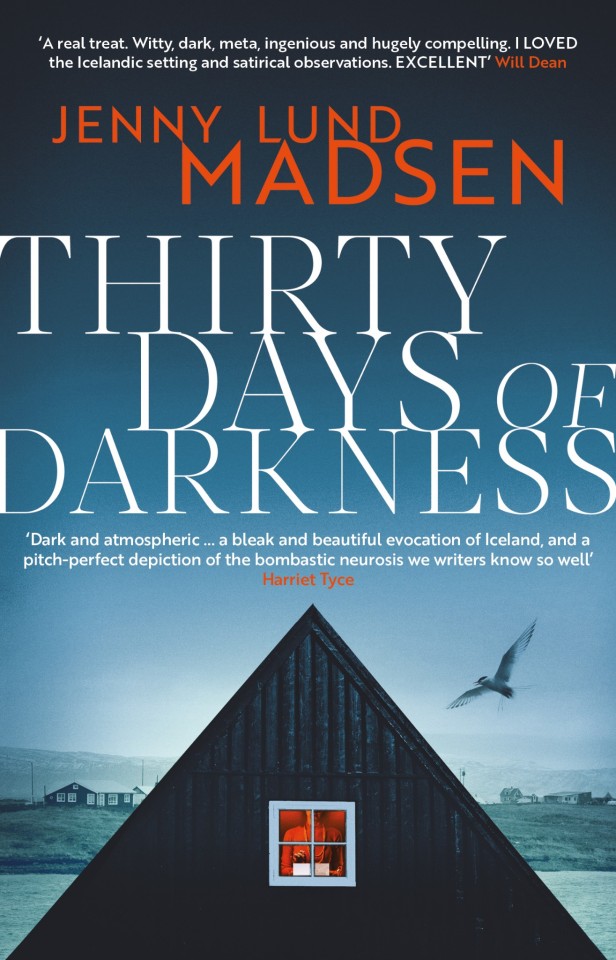
Thirty Days Of Darkness
By Jenny Lund Madsen
Translated by Megan Turney
Orenda Books
Publication Date: 25 May 2023
One of the UK’s most renowned publishers of translated crime fiction is Orenda books who have been regularly publishing novels by established Nordic Noir writers such as Gunnar Staalesen and Kjell Ola Dahl as well as more relative newcomers such as Eva Björg Ægisdóttir and Agnes Ravatn. Denmark’s Jenny Lund Madsen is an exciting new addition to that list as the publisher bring out her first novel in the English language. A very well-established script writer in her home country, her creativity has emanated in Danish television shows such as Follow The Money which was a three series drama series which followed the illegal activities of corporate crime circles, fraudsters and opportunists, which was shown on the BBC and also the comedy drama Rita which is available on Netflix.

While both indicate the author’s high standards of writing, it’s fair to say that neither resembles Thirty Days Of Darkness, other than perhaps their worldly viewpoint. Jenny Lund Madsen’s main character in the novel doesn’t stray too far away from her own occupation as our narrator Hannah is an author. Yet Hannah’s success as an author is measured, while her novels have reached critical acclaim, unfortunately they do not sell well to the general public. When she reluctantly attends a book fair in an attempt to sell her latest book, at the request of her agent, she finds herself infuriated by a discussion led by a high-profile crime writer. Unable to resist, she publicly scathes him for what she feels is his formulaic writing style and as a result he challenges her to write her own crime fiction novel. Her agent, pleased by the coverage of the interaction decides this is a great idea and arranges for Hannah to stay with someone he knows in a remote part of Iceland where he hopes she would feel inspired to write her novel. Feeling she has no choice but to agree, Hannah travels to Iceland but struggles to adjust to the very different environment to her home city of Copenhagen and wishes to return immediately, however when the nephew of the lady she is lodging with is found dead in potentially suspicious circumstances she agrees to remain, in part as this may inspire her own novel but also as she is intrigued to try to solve the mystery. The story is told from Hannah’s perspective alone as she tried to uncover what has happened to the boy while also trying to write a story loosely based on what she is learning along the way.
In recent years the foreboding Icelandic landscape has provided a rich and varied setting for crime fiction novels by both authors from that country and increasingly from other locations. Despite the title, Thirty Days Of Darkness is not wholly of dark subject nature, there are some amusing situations that occur during the novel as well as some particular revealing insights to the book publishing business. The main character Hannah is an introspective character, a loner who doesn’t always behave in an orthodox manner. While looking to say as little as possible about the storyline, I believe that Thirty Days Of Darkness is a novel that will have real appeal for readers of crime fiction and I am very keen to read more from Jenny Lund Madsen in the future.

The blurb:
A snobbish Danish literary author is challenged to write a crime novel in thirty days, travelling to a small village in Iceland for inspiration, and then the first body appears… Copenhagen author Hannah is the darling of the literary community and her novels have achieved massive critical acclaim. But nobody actually reads them, and frustrated by writer’s block, Hannah has the feeling that she’s doing something wrong. When she expresses her contempt for genre fiction, Hanna is publicly challenged to write a crime novel in thirty days. Scared that she will lose face, she accepts, and her editor sends her to Húsafjörður – a quiet, tight-knit village in Iceland, filled with colourful local characters – for inspiration. But two days after her arrival, the body of a fisherman’s young son is pulled from the water … and what begins as a search for plot material quickly turns into a messy and dangerous investigation that threatens to uncover secrets that put everything at risk … including Hannah.
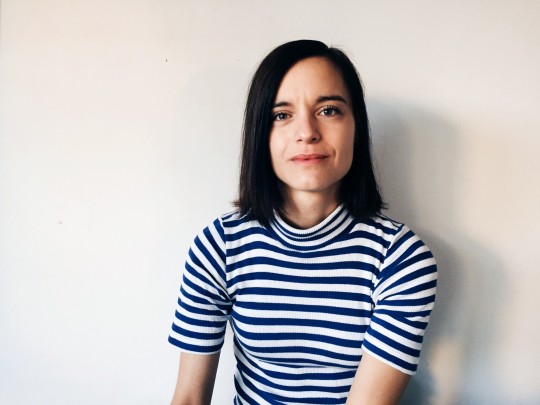
About the author
Jenny Lund Madsen is one of Denmark’s most acclaimed scriptwriters (including the international hits Rita and Follow the Money) and is known as an advocate for better representation for sexual and ethnic minorities in Danish TV and film. She recently made her debut as a playwright with the critically acclaimed Audition (Aarhus Teater) and her debut literary thriller, Thirty Days of Darkness, first in an addictive new series, won the Harald Mogensen Prize for Best Danish Crime Novel of the year and was shortlisted for the coveted Glass Key Award. She lives in Denmark with her young family.
Many thanks to Anne Cater at Random Things Tours for inclusion on the blog tour and Orenda Books for providing me with an advance copy of Thirty Days Of Darkness. Please look out for the other reviews of this book on the blog tour as shown below.

#crime fiction#crimeintranslation#european literature#novels in translation#nordicnoir#crime fiction in translation
3 notes
·
View notes
Text
Language Goals for 2025
new year, new goals, mostly not-new languages
while I am not a language student, I have somehow ended up venturing in that direction as I find myself trying to learn or maintain 10 languages this year. For the most part, I think I will just choose a language based on vibes and consume media in that language for that week. however, as I won't have any strict goals in mind as languages to me is first and foremost a hobby, I will most likely just orientate towards whichever one I feel like doing. In the case of Classical Chinese however, I might try to translate something once a week just so I can maintain the translation muscles.
enough of me yapping, here are my 2025 language goals:
Chinese
First language, fluent
Maintain reading and translation of both literary and regular texts and practice handwriting when possible
Goal: Consolidate translation portfolio for future translation works
English
Second and Primary language, fluent
Read 25 books in 2025, reading journal articles that are relevant to studies or degrees
Goal: Read 25 books in 2025 - more details on StoryGraph
Japanese
Third language, intermediate (although regressing)
Mostly maintenance, consolidate N5 and N4, and revise N3 vocab and grammar wherever possible. Try to rewatch some episodes of anime without English subtitles
Goal: take JLPT N3 at some point in 2025 (Dec?)
Korean
Fourth language, beginner
Revision and maintenance. Revise 1A materials, and learn 1B where possible. If available, try to talk to some native speakers (just simple 5 min conversations)
Goal: Be able to hold a simple 10 minute conversation about basics (family, hobbies, order food etc), and read simple children's stories
French, Danish, German
Fifth, sixth, and seventh languages, beginner
Active learning where possible - Duolingo & Clozemaster for vocab, simple grammar from textbooks and friends. Slangs whenever friends introduce one.
Goal: Be able to hold a simple 10 minute conversation about basics (family, hobbies, order food etc)
For French - try to read Le Petit Prince in the original
For Danish - try to read Den Lille Havfrue in the original
For German - try to read Rapunzel in the original
Spanish, Latin, and Ancient Greek
Seventh, eighth and ninth languages (Housemates' languages), have not attempted before
Housemates are both Classics and Spanish language students, no active goals but will try to participate in whatever they are studying or revising in.
That being said, I am also a Classics student and Spanish is an awfully useful language
#studyblr#langblr#studyspo#study motivation#chaotic academia#chinese langblr#danish#i just like languages okay??#and also i went on exchange in denmark and it’ll feel like cheating on my friends if i didn’t try to retain the language#language learning#translation
1 note
·
View note
Text
i kind of want to try translating this danish book i bought, it's by the same author as one of the books i wrote my thesis about and it's from last year so it hasn't been translated to polish yet but it's really inchresting soo like maybe i'll do it just for fun or maybe i'll try to launch my literary translation career somehow lmaoo
0 notes
Text
930. Aleksandr Skorobogatov
Aleksandr Skorobogatov is the author of Russian Gothic, available from Rare Bird. Translated by Ilona Yazhbin Chavasse.
Skorobogatov was born in Grodno in what is now Belorussia. He is one of the most original Russian writers of the post-communist era. An heir to Dostoevsky, Gogol, Bulgakov, Nabokov, Pelevin, and Sorokin--the surreal line of the Russian literary canon--his novels have been published to great acclaim in Russian, Croatian, Danish, Dutch, French, Italian, Greek, Serbian, and Spanish. He won the prestigious International Literary Award Città di Penne for the Italian edition of Russian Gothic, which also received the Best Novel of the Year Award from Yunost. Cocaine (2017) won Belgium's Cutting Edge Award for 'Best Book International'. His most recent novel, Raccoon, was published by De Geus in 2020. De Tijd has called Skorobogatov "the best Russian writer of the moment." He lives and works in Belgium.
***
Otherppl with Brad Listi is a weekly literary podcast featuring in-depth interviews with today's leading writers.
Available where podcasts are available: Apple Podcasts, Spotify, YouTube, etc.
Subscribe to Brad Listi’s email newsletter.
Support the show on Patreon
Merch
Twitter
Instagram
TikTok
Bluesky
Email the show: letters [at] otherppl [dot] com
The podcast is a proud affiliate partner of Bookshop, working to support local, independent bookstores.
www.otherppl.com
1 note
·
View note
Text
Thirty Days of Darkness by Jenny Lund Madsen by Jenny Lund Madsen translated by Megan E. Turney @JennyLundMadsen @OrendaBooks @meganeturney @RandomTTours
Thirty Days of Darkness is a terrific read, full of wit and yet beautifully dark and atmospheric. I thoroughly enjoyed this sparkling debut.
Source: Review copyPublication: Paperback – May 9th from Orenda BooksPP: 300ISBN-13: 978-1914585616 A snobbish Danish literary author is challenged to write a crime novel in thirty days, travelling to a small village in Iceland for inspiration, and then the first body appears… Copenhagen author Hannah is the darling of the literary community and her novels have achieved massive critical…

View On WordPress
0 notes
Text
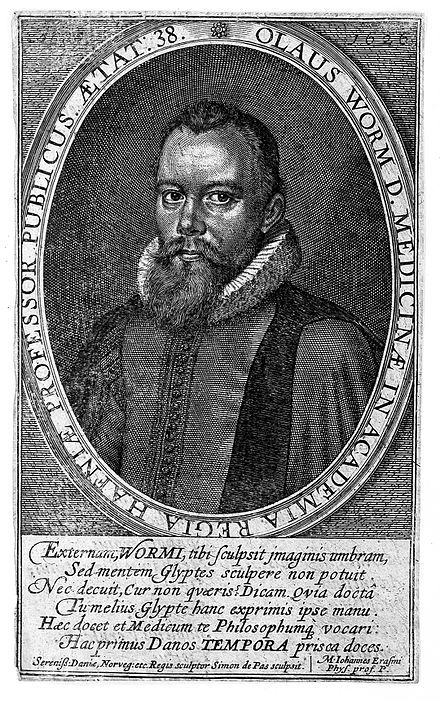
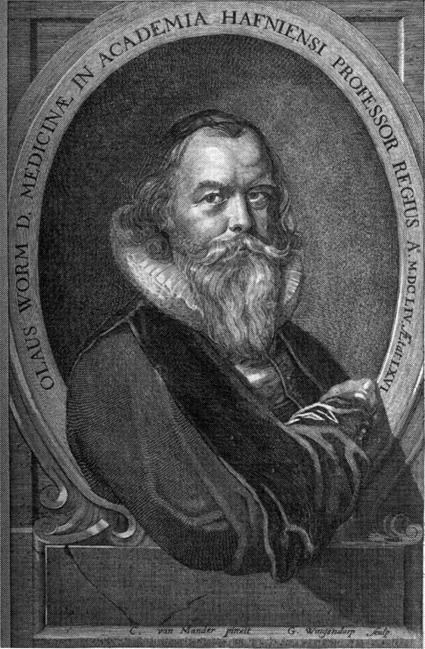
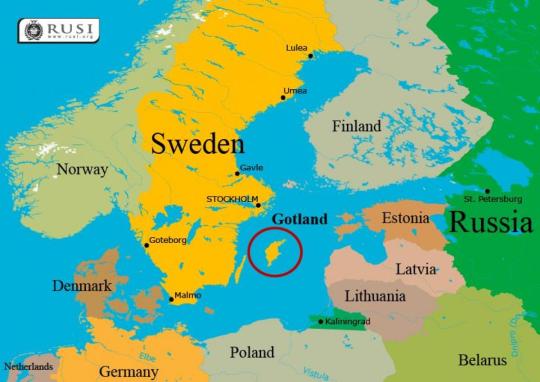

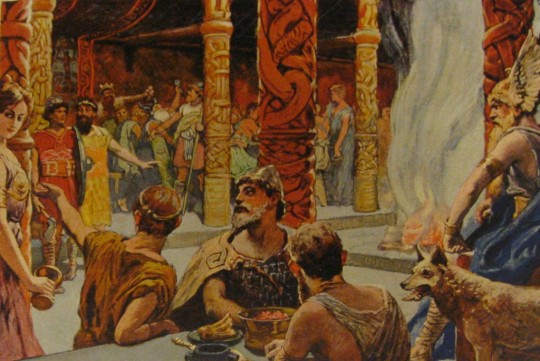
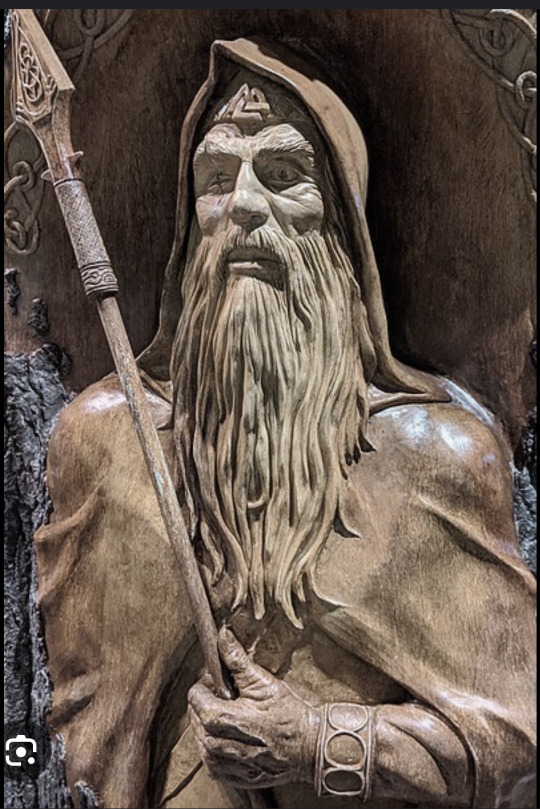
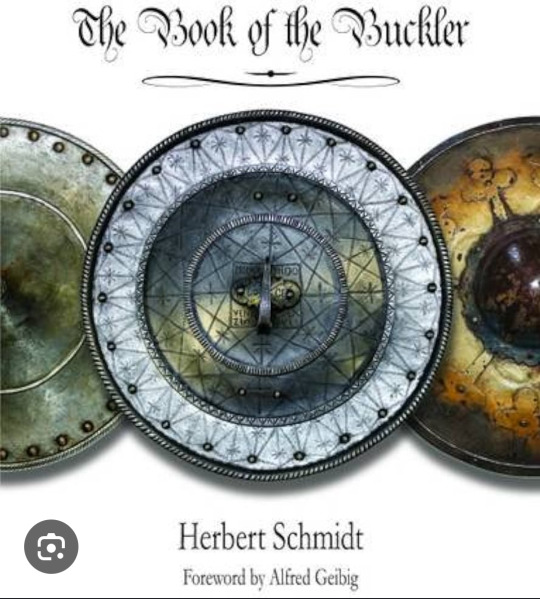
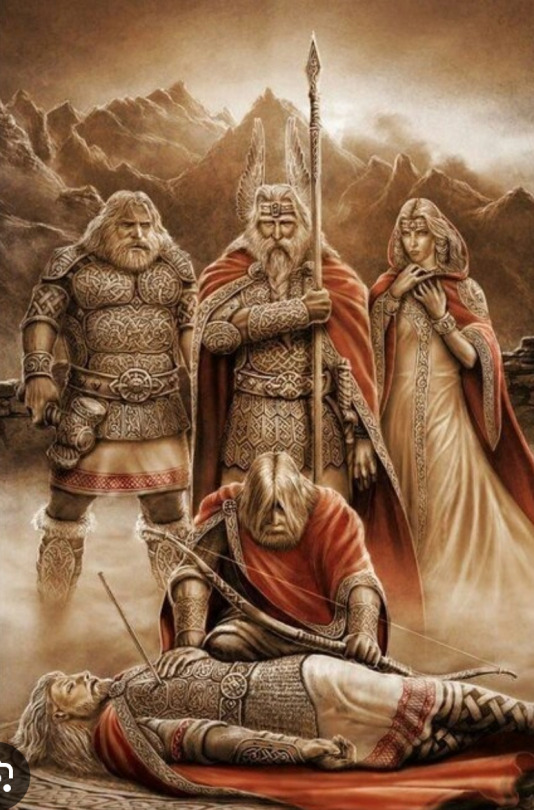


Pics: Notes on Lovecraft's viking translation!
1. Ragnar's real name was Ragnarr ("warrior") Lothbrok ("hairy pants").
He lived in the 800s AD & became King of Sweden & Denmark.
But, most that we know about him is from Norse legends & chronicles written sometime after his death in Northumbria, England - in 856 AD?
But, there was a Ragnar who sacked Paris in 845 AD...
2. Vikings is a 'historical' Canadian TV series filmed in Ireland.
It lasted 6 seasons & has a sequel series Vikings: Valhalla.
Both series are inspired by Ragnar's & his sons's 'lives.'
3. We're lucky to have a few sculptures & other art that help us see what some of the mighty & mythological looked like in ancient times.
Of course, not everyone was so immortalized.
So, 1 of the many goals of professional archaeology...
4. When Ragnar killed his dragon, he was protected from its venom by wearing fur britches dipped in pitch ("coal tar") & rolled in sand...
5. Breeches are short trousers that reach to just below one's knee.
They were popular in Europe during Medieval times.
Now worn for riding horses or as part of ceremonial dress during certain holidays.
6. An epicedium is generally any warrior's death song.
This particular 1 was among the 1st Norse poems to be translated into English.
It's certainly 1 of the most quoted viking tales.
Archaeologists have traced this poem back to Iceland.
This is as far west as his story originally reached.
But, there's also the Krakumal or "The Lay (short heroic poem) of Kraka," Ragnar's 2nd wife.
This was written in the 1100s AD & is thought to come from Scotland.
7. Olaus Wormius's name was actually Ole ("heir of the ancestors") Orme ("worm").
He was a 1600s Danish physician, historian & antiquarian who made important contributions to medical, historical & literary writings.
HPL name dropped Wormius - as a translator of the Necronomicon!
But, Howard thought, incorrectly, that Wormius lived during the 1200s AD.
8. Gothland, Gautland or Geatland is 1 of the 3 historical Swedish lands.
Now, it's divided into 10 provinces.
Geat is Swedish for "they who pour out their seed!"
Read into that what you will...
Beowulf ("bear wolf") is an example of a legendary Geat king.
9 & 10. Oreon & Diminum have, so far, eluded my attempts at translation & my efforts at finding them anywhere that I can reach.
11. The ravenous eagle mentioned here has 2 possibilities:
A. The Jotunn ("ice giant") Hraesvelgr ("corpse swallower") who, could transform into a giant eagle.
Sitting atop Yggdrasil ("Odin's horse"), this giant creates the world's winds by flapping his wings.
Yggdrasil is the World Tree, which 'connected' the 9 worlds.
(This is thought to be the Norse view of seeing the Milky Way at night, when it appears to be a long glowing river or branch.)
But, it has a darker meaning as well.
Yggdrasil is Norse slang for "the gallows!"
Odin gained his 'wisdom' by hanging himself from Yggdrasil.
Yggr ("the terrifying one") is just a nickname of Odin's - as Lord of the Berserkers.
B. The other eagle is Odin himself! As he also has the nicknames of Orn, "eagle" & Arnhofthi, "eagle headed!!"
Woden/Wotan is just an earlier Anglo- Saxon version of "Odin." He was a War God & Protector of Heroes.
This name has been traced back to a Proto-German language, in the form of Wothanaz, "Lord of the Frenzied" & "Leader of the Possessed" - the 'mad' Berserkers again.
12. The Vistula ("slow flowing?") is the longest river in Poland & is an import- ant part of this country's cultural identity.
The phrase "Country Upon Vistula" is a nickname of Poland.
13. The Hall of Odin is Valhalla ("hall of the slain"), where heroes get to fight all day & feast all night!
Warriors where brought here by Valkyries ("choosers of the slain"), who judged which fighter was worthy of this honor.
And here they would remain, all preparing for Ragnarok ("twilight of the Gods") & its final battle - when all of creation would sink burning into the seas...
Luckily, with time, a new Age would appear out of all the destruction.
And, new Gods & mortals would awake to a glorious new dawn.
If this sounds very Christian to you, just remember that these myths were written down in the 1200s AD - 200 years after Iceland (the last holdout of the Norse religion) finally accepted Christianity.
14. The Helsingians are still around! They're the inhabitants of Helsinki, Sweden.
15. Bucklers are small, round, portable shields used as a 2nd weapon!
They were useful for 'stopping' an enemy's sword arm up against their own body!!
Or, to bloody an opponent's nose or blind an eye! It could even parry their blows & hinder their movements.
Weird Bit: The Welsh used small leather shields with a central iron spike called a boss...
How come I didn't see these in Brave- Heart?
16. Herauclus remains stubborn to find, though it sounds like a Norse version of the Latin Hercules!
'Officially,' the Norse Hercules was thought to be Magni, son of Thor!!
He's 1 of the children of Thor's 1st wife Jarnsaxa ("iron dagger") & saves his father when 3 days?/years? old!
Along with very few other Gods, Magni survives Ragnarok!!
But, there's actually a whole bunch of Norse 'men' that could stand in for the Grecian hero:
A. Barbatus, "the Bearded."
B. Batavos, "from the lower Rhine River."
C. Deusonianus, "from the town of Deuso."
D. Invictus, "the Victorious."
E. Magusanus, "the Mighty."
F. Maliator, "the Club Thrower."
G. Saxanus, "of the Mountain."
17. Scarfians originated from Skarphe in eastern Greece. Due to Roman influence, these folk moved to Italy - especially around Sicily & Catania.
From there, these families also moved out to Celtic Gaul - modern France.
There, they fought the Vikings at what would become Normandy.
Though this surname remains rare (a- round 190 people today), Scarfians have spread to the Americas as well...
18. Ragno translates as Rufus, Latin for "red headed."
However, this is not William Rufus - who was King William the 3rd & reigned til 1100 AD, some 250 years after Ragnar's time.
Genetically, red haired folk were found in Scandinavia, Mycenaean Greece & Central Asia...
19 & 20. The Indirian Islands & the Plain of Lano remain deep secrets of history.
Perhaps, in the future, such info will be freely available for comments.
21. "Balder ("hero prince") is best known for his death bringing about Ragnarok!!
But, we're after different game here.
Ragnar seems to imply that Balder is his 'father'!
Of course, this has been done since the Egyptians & Sumerians 1st started this deification & separation of our societies's leaders.
And, the idea has been tried with other Norse Gods - Odin's Volsungs, Frey's Ynglings, etc...
Of course, "Father Balder(!)" could just be a pious exclamation with no other meaning.
You be Forseti ("the presiding one"), judge of the Norse Gods & only son of Balder?!
22. Aelle/Ella was King of North- umbria during the 850s AD.
Hearing that Ragnar had surrendered at Wessex, Ella had the prisoner brought to him.
Then, Ella tortured Ragnar for days. But, Ragnar remained stoically silent.
So, Ella threw Ragnar into a pit of poisonous vipers & Ragnar finally responded - by singing out his death song...
23. The Norse Goddess of Death was usually Hela, the half dead Queen of Helheim.
But, this isn't who Ragnar wants to drink ale with!
Hela only collects the cowardly & those who didn't die in battle.
No, Ragnar is speaking about his personal Valkyrie!
These minor Goddesses of Death controlled who was accepted into the ranks of Valhalla.
The 'dead' champions were needed to help battle the Jotunn during a future Ragnarok.
Anyway, Valkyries acted as servants to the fighting souls of Valhalla.
When Ragnarok arrived , the Valkyries would join the major Norse Gods in their desperate last battle...
1 note
·
View note
Text
Facilitating Communication Bridges: The Significance of Danish Translation Services
In our increasingly interconnected world, effective communication across linguistic barriers is essential for fostering collaboration, understanding, and success. As businesses, individuals, and organizations engage in global interactions, the demand for proficient language translation services continues to rise. Danish Translation Services play a pivotal role in bridging language gaps and facilitating seamless communication between Danish speakers and individuals or entities from different linguistic backgrounds. This article explores the importance and impact of Danish Translation Services in enabling cross-cultural communication and fostering international cooperation.
Danish Translation Services encompass a wide array of linguistic solutions tailored to meet the diverse needs of clients across various sectors. From document translation and interpretation to localization and transcreation, these services cater to a myriad of requirements in both personal and professional contexts. The proficient use of Danish Translation Services ensures accurate and culturally sensitive communication, enabling effective interaction and collaboration between Danish speakers and individuals or organizations from around the world.
One of the primary applications of Danish Translation Services is in the realm of international business and commerce. With Denmark being a key player in industries such as renewable energy, shipping, and pharmaceuticals, businesses often seek to engage with Danish partners, clients, or consumers. Accurate translation of business documents, contracts, marketing materials, and product information into Danish is essential for establishing and maintaining successful relationships in the Danish market. Danish Translation Services enable businesses to convey their messages clearly and effectively, thereby enhancing their market presence and competitiveness.
Moreover, Danish Translation Services are essential for promoting cultural understanding and cooperation in diplomatic and governmental affairs. As Denmark engages in diplomatic relations and international collaborations, accurate translation of diplomatic correspondence, treaties, and official documents into Danish is crucial. Danish Translation Services ensure that communication remains clear and precise, fostering mutual understanding and trust between nations. By facilitating effective communication between diplomatic entities, these services contribute to strengthening bilateral relations and promoting cooperation on various fronts, including trade, security, and environmental issues.
In addition to business and diplomacy, Danish Translation Services play a vital role in the field of education and research. Denmark boasts a renowned education system and is home to several prestigious universities and research institutions. As scholars and researchers collaborate on projects that span multiple countries and languages, the need for accurate translation of academic papers, research findings, and educational materials into Danish arises. Danish Translation Services ensure that knowledge is accessible to Danish-speaking audiences, facilitating the exchange of ideas and advancing research in various fields.
Furthermore, Danish Translation Services contribute to promoting cultural exchange and preserving linguistic heritage. Denmark has a rich cultural history, encompassing literature, art, design, and culinary traditions. Translation allows for the sharing of Danish cultural treasures with audiences from different linguistic backgrounds, fostering cultural understanding and appreciation. By providing translations of literary works, films, and other cultural artifacts, Danish Translation Services enrich cultural diversity and promote dialogue between different communities.
In conclusion, Danish Translation Services play a vital role in facilitating cross-cultural communication, fostering international cooperation, and promoting cultural exchange. Whether in business, diplomacy, education, or culture, these services bridge linguistic divides and promote understanding between Danish speakers and individuals or entities from different linguistic backgrounds. As Denmark continues to engage with the global community and as linguistic diversity remains a hallmark of Danish society, the demand for proficient Danish Translation Services will continue to grow, underscoring their significance in fostering global connectivity and cooperation.
0 notes